Januar / January / Enero / Gener 2021
1. Sinti in der DDR. Alltag einer Minderheit. Markus Hawlik-Abramowitz und Simone Trieder. Mitteldeutscher Verlag. 2020.
 Es war die unmittelbare Folge der Vernichtungspolitik der Nazis, dass es in der DDR nur wenige Sinti gab. Die zurückkamen, kämpften um die Anerkennung als Verfolgte des Nationalsozialismus. Sinti waren zwar »normale« DDR-Staatsbürger, aber es gab für sie keine Anerkennung als ethnische Minderheit. In ihren Familienverbänden lebten sie in einer Art Parallelgesellschaft. An den Schnittstellen wie in Schulen und Ämtern waren nicht wenige Sinti gesellschaftlichem Rassismus ausgesetzt, denn in der DDR – wie in der Bundesrepublik – lebten die alten Vorurteile gegenüber den »Zigeunern« fort.
Es war die unmittelbare Folge der Vernichtungspolitik der Nazis, dass es in der DDR nur wenige Sinti gab. Die zurückkamen, kämpften um die Anerkennung als Verfolgte des Nationalsozialismus. Sinti waren zwar »normale« DDR-Staatsbürger, aber es gab für sie keine Anerkennung als ethnische Minderheit. In ihren Familienverbänden lebten sie in einer Art Parallelgesellschaft. An den Schnittstellen wie in Schulen und Ämtern waren nicht wenige Sinti gesellschaftlichem Rassismus ausgesetzt, denn in der DDR – wie in der Bundesrepublik – lebten die alten Vorurteile gegenüber den »Zigeunern« fort.
Das Buch stellt erstmals den Alltag der Sinti in der DDR einer breiten Öffentlichkeit vor. Die Aufnahmen von Markus Hawlik-Abramowitz beeindrucken durch die Nähe des Fotografen zu seinen Protagonisten. Sie entstanden im Rahmen seines Fotografie-Diploms 1983 an der Hochschule für Grafik und Buchkunst Leipzig, wurden in der DDR jedoch nie gezeigt. Erst nach Hawliks Ausreise kam es im »Stern« zur teilweisen Publikation; ein Großteil der Fotoserie wird in diesem Buch erstmals veröffentlicht.
Simone Trieders Essay beschreibt einfühlsam, faktenreich und anekdotisch die Erlebniswelt von Sinti im ostdeutschen Sozialismus. Grundlage sind ihre Recherchen in vielen Archiven und Gespräche mit Zeitzeugen.
2. 200 Years Later: Commemorating the 200 year anniversary of the Abolition of the Transatlantic Slave Trade. Nadja Ofuatey-Rahal. AfricAvenir International e.V. & Werkstatt der Kulturen. 2008.
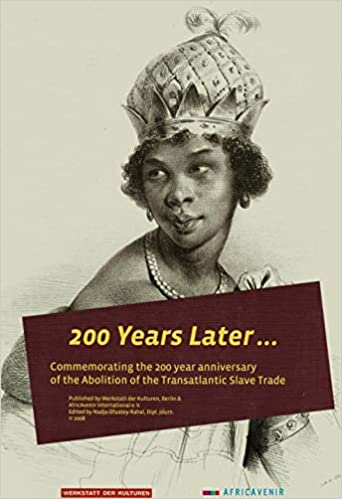 This reader was published on occasion of the event series „200 Years Later…“ in 2008, commemorating the 200 year anniversary of the official Abolition of the Transatlantic Slave Trade. At the center of this interdisciplinary festival stands the celebration of the mch neglected and therefore still widely unkown manifold strategies of resistance of African people/people of African descendents against Transatlantic Slave Trade and the cultural and artistic practices they developed on the basis of this resilience.
This reader was published on occasion of the event series „200 Years Later…“ in 2008, commemorating the 200 year anniversary of the official Abolition of the Transatlantic Slave Trade. At the center of this interdisciplinary festival stands the celebration of the mch neglected and therefore still widely unkown manifold strategies of resistance of African people/people of African descendents against Transatlantic Slave Trade and the cultural and artistic practices they developed on the basis of this resilience.
A specially produced exhibition of portraits of resistance fighters under the title „Portraits of Resistance against the Transatlantic Slave Trade and Slavery“ features at the heart of the festival, framed by workshops, lectures, film screenings, performances and concerts. The publication features the exhibited portraits as well as essays by eminent scholars such as Louise Marie Diop-Maes, Silviane A. Diouf, David Richardson, Joseph Yai Olabibyi Babalola, Howard Dodson, Horace Campbell and many others.
3. Cuando somos el enemigo. Activismo negro en España. Jeffrey Abe Pans. Editorial MEY. 2019.

„Lo cierto es que los colectivos y organizaciones que, desde hace años, promovemos el empoderamiento de la población africana y afrodescendiente en españa, siempre debatimos sobre qué factores y estrategias son más favorables para mejorar la situación de nuestra comunidad.“
Jeffrey Abe Pans
4. Der Libertäre Atlantik. Unsere Heimat ist die ganze Welt. Tim Wätzold. Verlag barrikade. 2015.
 Der libertäre Atlantik behandelt die Entstehung der Arbeiterbewegungen Südamerikas im Zusammenhang mit der europäische Massenmigration anhand der Untersuchungsländer Argentinien, Uruguay und Brasilien im Zeitraum 1870 bis 1920. Der Schwerpunkt liegt in der Analyse der soziokulturellen Transformationsprozesse im transnationalen historischen Vergleich. Durch Untersuchung der Entwicklung anhand von Institutionen, Diskursen sowie performativen, politischen als auch kulturellen Praktiken werden die transkulturellen Aspekte der kollektiven Identität als internationale Arbeiterbewegung behandelt. Diese vergleichbaren Praktiken im atlantischen Raum waren Teil der Subjektivierung des Internationalen Proletariats. Neben der Gründung von Gewerkschaften und Vereinen werden die damit verbundenen kulturellen Einrichtungen wie Schulen, Theater und Bibliotheken sowie die Alltags- und Freizeitgestaltung untersucht. Berücksichtigt werden die Entwicklung der Migration, Industrialisierung und Urbanisierung in den südamerikanischen Einwanderungsländern, die den Kontext bildeten für die Entstehung und Interaktion der Arbeiterbewegungen im libertären Atlantik.
Der libertäre Atlantik behandelt die Entstehung der Arbeiterbewegungen Südamerikas im Zusammenhang mit der europäische Massenmigration anhand der Untersuchungsländer Argentinien, Uruguay und Brasilien im Zeitraum 1870 bis 1920. Der Schwerpunkt liegt in der Analyse der soziokulturellen Transformationsprozesse im transnationalen historischen Vergleich. Durch Untersuchung der Entwicklung anhand von Institutionen, Diskursen sowie performativen, politischen als auch kulturellen Praktiken werden die transkulturellen Aspekte der kollektiven Identität als internationale Arbeiterbewegung behandelt. Diese vergleichbaren Praktiken im atlantischen Raum waren Teil der Subjektivierung des Internationalen Proletariats. Neben der Gründung von Gewerkschaften und Vereinen werden die damit verbundenen kulturellen Einrichtungen wie Schulen, Theater und Bibliotheken sowie die Alltags- und Freizeitgestaltung untersucht. Berücksichtigt werden die Entwicklung der Migration, Industrialisierung und Urbanisierung in den südamerikanischen Einwanderungsländern, die den Kontext bildeten für die Entstehung und Interaktion der Arbeiterbewegungen im libertären Atlantik.
5. Anarchist Cuba. Countercultural Politics in the Early Twentieth Century. Kirwin Shaffer. PM Press. 2019.
 This is the first critical, in-depth study of the anarchist movement in Cuba in the three decades after the republic’s independence from Spain in 1898. Kirwin Shaffer shows that anarchists played a significant—until now little-known—role among Cuban leftists in shaping issues of health, education, immigration, the environment, and working-class internationalism. They also criticized the state of racial politics, cultural practices, and the conditions of children and women on the island. In the chaotic new country, members of the anarchist movement reinterpreted the War for Independence and the revolutionary ideas of patriot José Martí, embarking on a nationwide debate with the larger Cuban establishment about what it meant to be “Cuban.” To counter the dominant culture, the anarchists created their own initiatives—schools, health institutes, vegetarian restaurants, theater and fiction writing groups, and occasional calls for nudism—and as a result they challenged both the existing elite and the occupying U.S. military forces.
This is the first critical, in-depth study of the anarchist movement in Cuba in the three decades after the republic’s independence from Spain in 1898. Kirwin Shaffer shows that anarchists played a significant—until now little-known—role among Cuban leftists in shaping issues of health, education, immigration, the environment, and working-class internationalism. They also criticized the state of racial politics, cultural practices, and the conditions of children and women on the island. In the chaotic new country, members of the anarchist movement reinterpreted the War for Independence and the revolutionary ideas of patriot José Martí, embarking on a nationwide debate with the larger Cuban establishment about what it meant to be “Cuban.” To counter the dominant culture, the anarchists created their own initiatives—schools, health institutes, vegetarian restaurants, theater and fiction writing groups, and occasional calls for nudism—and as a result they challenged both the existing elite and the occupying U.S. military forces.
Shaffer also focuses on what anarchists did to prepare the masses for a social revolution. While many of the Cuban anarchists‘ ideals flowed from Europe, their programs, criticisms, and literature reflected the specifics of Cuban reality and appealed to Cuba’s popular classes. Using theories of working-class internationalism, countercultures, popular culture, and social movements, Shaffer analyzes archival records, pamphlets, newspapers, and novels, showing how the anarchist movement in republican Cuba helped shape the country’s early leftist revolutionary agenda.
6. Algiers, Third World Capital. Freedom Fighters, Revolutionaries, Black Panthers. Elaine Mokhtefi. 2018.
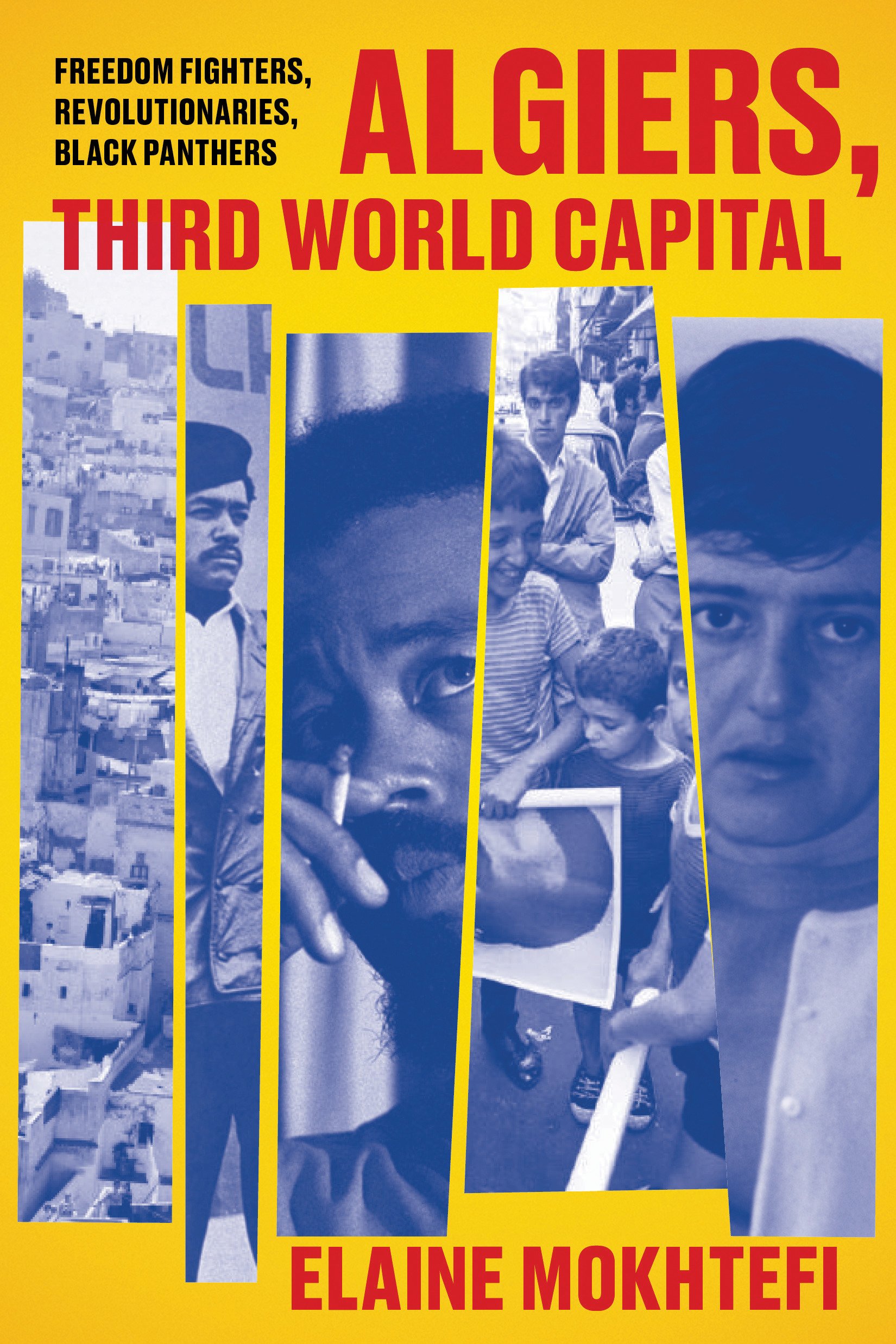 Following the Algerian war for independence and the defeat of France in 1962, Algiers became the liberation capital of the Third World. Elaine Mokhtefi, a young American woman immersed in the struggle and working with leaders of the Algerian Revolution, found a home here. A journalist and translator, she lived among guerrillas, revolutionaries, exiles, and visionaries, witnessing historical political formations and present at the filming of The Battle of Algiers.
Following the Algerian war for independence and the defeat of France in 1962, Algiers became the liberation capital of the Third World. Elaine Mokhtefi, a young American woman immersed in the struggle and working with leaders of the Algerian Revolution, found a home here. A journalist and translator, she lived among guerrillas, revolutionaries, exiles, and visionaries, witnessing historical political formations and present at the filming of The Battle of Algiers.
Mokhtefi crossed paths with some of the era’s brightest stars: Frantz Fanon, Stokely Carmichael, Timothy Leary, Ahmed Ben Bella, Jomo Kenyatta, and Eldridge Cleaver. She was instrumental in the establishment of the International Section of the Black Panther Party in Algiers and close at hand as the group became involved in intrigue, murder, and international hijackings. She traveled with the Panthers and organized Cleaver’s clandestine departure for France. Algiers, Third World Capital is an unforgettable story of an era of passion and promise.
8. A Taste of Power. A Black Woman‘s Story. Elaine Brown. Anchor Books. 1994.
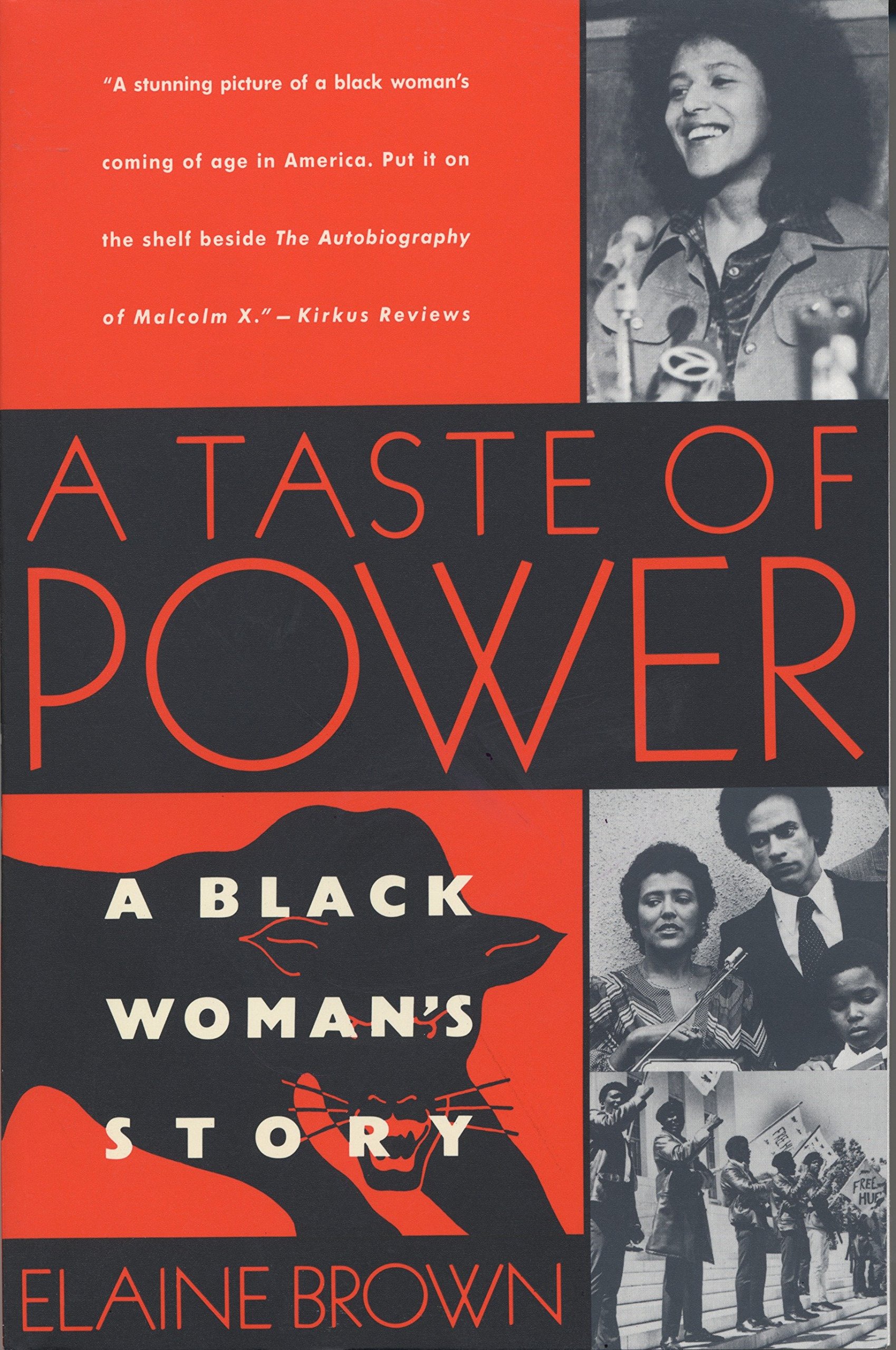 Elaine Brown assumed her role as the first and only female leader of the Black Panther Party with these words: “I have all the guns and all the money. I can withstand challenge from without and from within. Am I right, Comrade?” It was August 1974. From a small Oakland-based cell, the Panthers had grown to become a revolutionary national organization, mobilizing black communities and white supporters across the country—but relentlessly targeted by the police and the FBI, and increasingly riven by violence and strife within. How Brown came to a position of power over this paramilitary, male-dominated organization, and what she did with that power, is a riveting, unsparing account of self-discovery.
Elaine Brown assumed her role as the first and only female leader of the Black Panther Party with these words: “I have all the guns and all the money. I can withstand challenge from without and from within. Am I right, Comrade?” It was August 1974. From a small Oakland-based cell, the Panthers had grown to become a revolutionary national organization, mobilizing black communities and white supporters across the country—but relentlessly targeted by the police and the FBI, and increasingly riven by violence and strife within. How Brown came to a position of power over this paramilitary, male-dominated organization, and what she did with that power, is a riveting, unsparing account of self-discovery.
She describes her political awakening during the bohemian years of her adolescence, and her time as a foot soldier for the Panthers, who seemed to hold the promise of redemption. And she tells of her ascent into the upper echelons of Panther leadership: her tumultuous relationship with the charismatic Huey Newton, who would become her lover and her nemesis; her experience with the male power rituals that would sow the seeds of the party’s demise; and the scars that she both suffered and inflicted in that era’s paradigm-shifting clashes of sex and power. Stunning, lyrical, and acute, this is the indelible testimony of a black woman’s battle to define herself.
9. Die Revolte bin ich – 40 Jahre radikal. Teil I von II Bänden. Frans Scholten. edition assemblage. 2020.
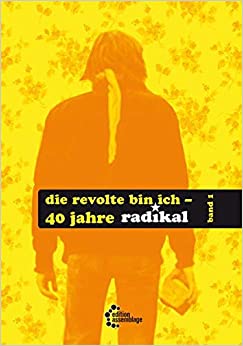 Revolte und Bewegung – Die linksradikale Zeitschrift ‚radikal‘ ist seit 1976 (bis ins Jahr 2019) ein Teil dieser Symbiose. Insofern ist sie bis heute das Medium, welches sich über Aktion, Militanz und Revolte auseinandersetzt. Neben der Selbstdarstellung verschiedener Redaktionen und ihren jeweiligen Betrachtungsweisen fließen aber auch die Erfahrungen von Zeitzeug_innen mit ein, basierend auf persönlichen, ja autobiographischen Hintergründen, die, eingebettet in den jeweiligen Kontext, ihre Eindrücke und Ansätze vermitteln. So entsteht allmählich ein oszillierendes Bild linksradikaler Geschichte, über die Beat-Revolte in Leipzig zur Revolte ‘68 hin zu den Spontis, zu den K-Gruppen bis zum bewaffneten Kampf sowie der neuen Umweltbewegung und den späteren Hausbesetzungen. Für ein Anti-Geschichtsbuch, wie es sich der Autor vorstellen mag, braucht es allerdings mehr als eine originelle Zeitreise, es braucht eine weiterführende Vorstellung von einer linksradikalen Bewegungslehre; genauso wie es eine Bereitschaft dazu braucht, sich auf die Vielfalt einzulassen, die eine Genealogie der Revolte voraussetzt, um sich selbst neu bestimmen zu können.
Revolte und Bewegung – Die linksradikale Zeitschrift ‚radikal‘ ist seit 1976 (bis ins Jahr 2019) ein Teil dieser Symbiose. Insofern ist sie bis heute das Medium, welches sich über Aktion, Militanz und Revolte auseinandersetzt. Neben der Selbstdarstellung verschiedener Redaktionen und ihren jeweiligen Betrachtungsweisen fließen aber auch die Erfahrungen von Zeitzeug_innen mit ein, basierend auf persönlichen, ja autobiographischen Hintergründen, die, eingebettet in den jeweiligen Kontext, ihre Eindrücke und Ansätze vermitteln. So entsteht allmählich ein oszillierendes Bild linksradikaler Geschichte, über die Beat-Revolte in Leipzig zur Revolte ‘68 hin zu den Spontis, zu den K-Gruppen bis zum bewaffneten Kampf sowie der neuen Umweltbewegung und den späteren Hausbesetzungen. Für ein Anti-Geschichtsbuch, wie es sich der Autor vorstellen mag, braucht es allerdings mehr als eine originelle Zeitreise, es braucht eine weiterführende Vorstellung von einer linksradikalen Bewegungslehre; genauso wie es eine Bereitschaft dazu braucht, sich auf die Vielfalt einzulassen, die eine Genealogie der Revolte voraussetzt, um sich selbst neu bestimmen zu können.
10. SPIEL/GAME/JOC: La Batalla de Can Vies. Gall Negre – Jocs de taula. 2020.
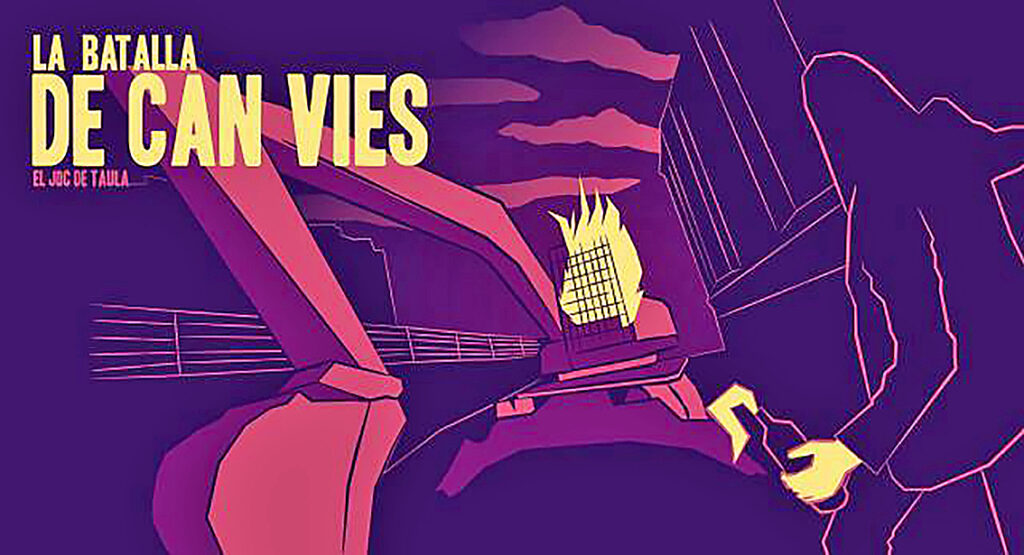 La Batalla de Can Vies és un joc de taula ambientat en el conflicte que es va viure al barri de Sants i a la ciutat de Barcelona quan es va intentar desallotjar el CSA Can Vies, al mes de maig de l’any 2014. És un joc d’estratègia asimètric per a dues o més jugadores, on els dos bàndols enfrontats -institucions i moviments socials- hauran de rivalitzar i competir per derrotar a l’altre. Lluitant als carrers de Sants per enderrocar o impedir l’enderroc de Can Vies, procurant mantenir quotes de popularitat acceptables al llarg del conflicte, o intentant que aquest últim desbordi i s’estengui a Barcelona i més enllà.
La Batalla de Can Vies és un joc de taula ambientat en el conflicte que es va viure al barri de Sants i a la ciutat de Barcelona quan es va intentar desallotjar el CSA Can Vies, al mes de maig de l’any 2014. És un joc d’estratègia asimètric per a dues o més jugadores, on els dos bàndols enfrontats -institucions i moviments socials- hauran de rivalitzar i competir per derrotar a l’altre. Lluitant als carrers de Sants per enderrocar o impedir l’enderroc de Can Vies, procurant mantenir quotes de popularitat acceptables al llarg del conflicte, o intentant que aquest últim desbordi i s’estengui a Barcelona i més enllà.
Escull si vols comandar les forces policials, polítiques i mediàtiques fent-te càrrec de les institucions públiques. O, si pel contrari, el teu cor rebel et porta a voler coordinar la multitud que s’ha aplegat als carrers, liderant els moviments socials en aquest moment de revolta.
11. The International Brigades. Fascism, Freedom and the Spanish Civil War. Giles Tremlett. Bloomsbury. 2020.
 The Spanish Civil War was the first armed battle in the fight against fascism, and a rallying cry for a generation. Over 35,000 volunteers from sixty-one countries around the world came to defend democracy against the troops of Franco, Hitler and Mussolini.
The Spanish Civil War was the first armed battle in the fight against fascism, and a rallying cry for a generation. Over 35,000 volunteers from sixty-one countries around the world came to defend democracy against the troops of Franco, Hitler and Mussolini.
Ill-equipped and disorderly, yet fuelled by a shared sense of purpose and potential glory, disparate groups of idealistic young men and women banded together to form a volunteer army of a size and kind unseen since the Crusades, known as the International Brigades. These passionate liberal fighters – from across Europe, China, Africa and the Americas – would join the Republican cause, fighting for over two years on the bloody battlegrounds of Madrid, Jarama and Ebro.
12. Corcel de fuego. Lucía Sánchez Saornil. Edición: Nuria Capdevila-Argüelles. Colección Torremozas. 2020.
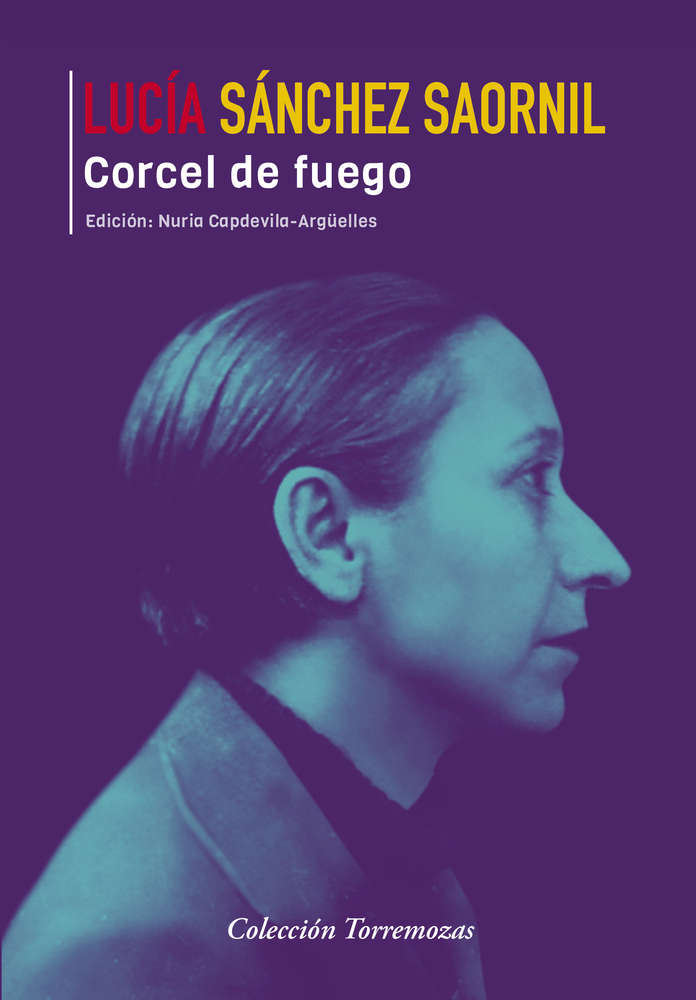 LUCÍA SÁNCHEZ SAORNIL (Madrid, 1895-Valencia, 1970) fue una voz excepcional en el movimiento literario de vanguardia conocido como Uötraísmo. Publicó sus poemas en algunas de las revistas más significativas de la Edad de Plata: Avante, Los Quijotes, Grecia, Cervantes o Ultra, entre otras. El origen proletario de esta autora intensificó su compromiso social, gracias también a su militancia en el movimiento anarquista. Su lucha la llevó a convertirse en una de las fundadoras de Mujeres Libres y, tras el final de la Guerra Civil, cesó su actividad pública política y cultural.
LUCÍA SÁNCHEZ SAORNIL (Madrid, 1895-Valencia, 1970) fue una voz excepcional en el movimiento literario de vanguardia conocido como Uötraísmo. Publicó sus poemas en algunas de las revistas más significativas de la Edad de Plata: Avante, Los Quijotes, Grecia, Cervantes o Ultra, entre otras. El origen proletario de esta autora intensificó su compromiso social, gracias también a su militancia en el movimiento anarquista. Su lucha la llevó a convertirse en una de las fundadoras de Mujeres Libres y, tras el final de la Guerra Civil, cesó su actividad pública política y cultural.
Corcel de fuego reúne la labor literaria, tanto de poesía como de prosa, de Lucía Sánchez Saornil comprendida entre los años 1913 y 1933. Esta edición, a cargo de Nuria Capdevila-Argüelles, incorpora además cincuenta y seis nuevos textos no recogidos hasta ahora en libro, lo que nos permite ahondar en la evolución literaria de la poeta y en su trayectoria intelectual.
13. Aproximación al papel de las mujeres dentro de los Grupos Autónomos de la Transacción: testimonios para la reflexión y la memoria. Irene Cardona Cucó. 2015/2016. Descontrol.
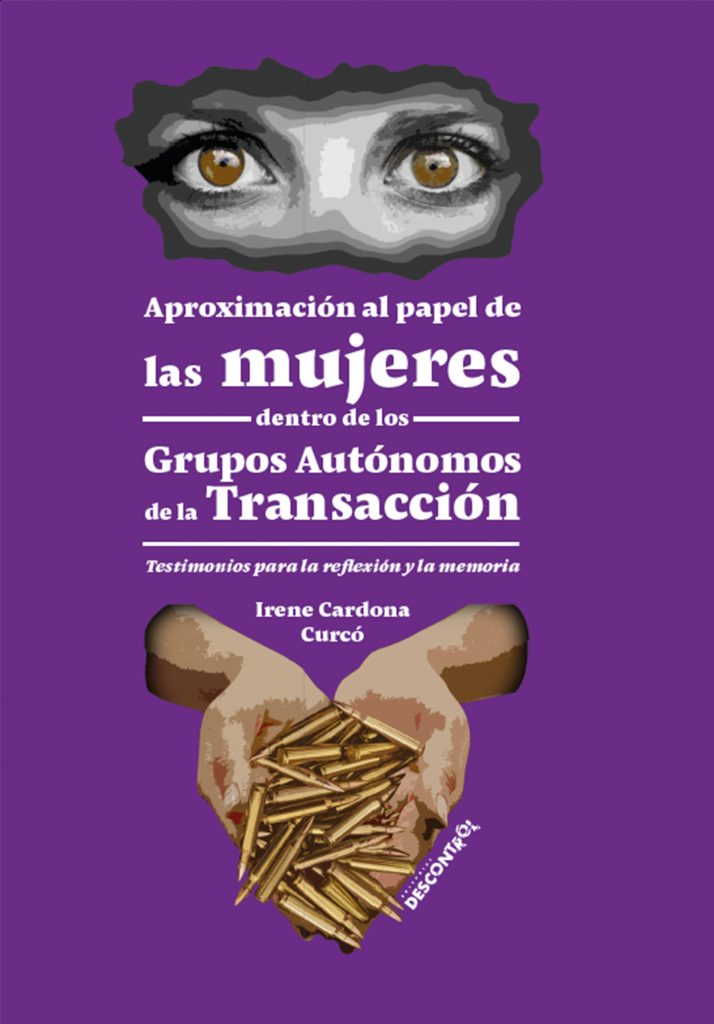 Este trabajo es una pequeña inmersión antropológica a la experiencia de las mujeres que participaron en la lucha de los grupos autónomos libertarios durante la época de la Transacción democrática.
Este trabajo es una pequeña inmersión antropológica a la experiencia de las mujeres que participaron en la lucha de los grupos autónomos libertarios durante la época de la Transacción democrática.
Partiendo de una perspectiva epistemológica feminista, enfocar la investigación en los testimonios de mujeres que no han tenido un lugar desde el que enunciar su discurso o la refexión de sus vivencias implica una voluntad de generar reconocimiento en torno a las distintas violencias que han sufrido, pero, sobre todo, de su lucha, de las resistencias que intentarion y de su contribución a la historia.
Más allá, la autora plantea como imprescindible la construcción de sus memorias particulares para que éstas puedan ser incorporadas a la memoria colectiva de un periodo y unas luchas invisibilizadas, para poder acercarnos mejor a los hechos y construir, a la vez, imaginarios en¡ los que las mujeres no estemosexcluidas.
14. ¿Y qué hacemos con los violadores? Perspectivas anarquistas sobre cómo afrontar la violencia sexual y otras agresiones machistas. Heura Negra y Descontrol Editorial. 2020.
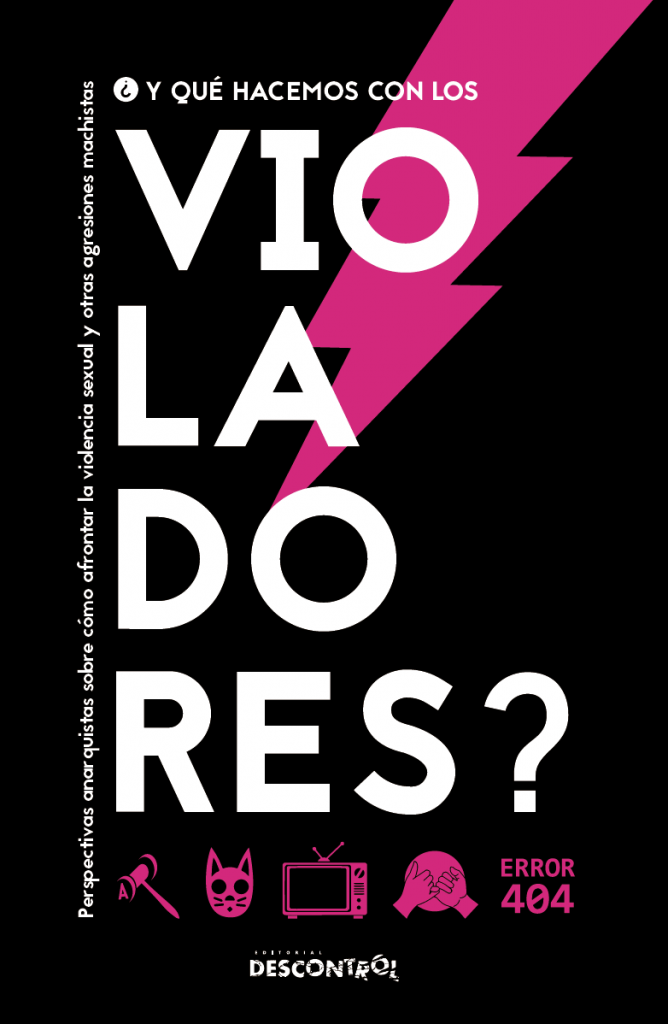 Esta compilación es una aportación, para revisar qué no funciona, donde nos equivocamos, cuáles son los posibles caminos, qué opciones tenemos, hacia donde nos dirigimos… e intentar responder la pregunta de “Y qué hacemos con los violadores?” sin dogmas, con la mente abierta, con mucha convicción y predisposición a la escucha. Porque las vidas destrozadas por estas formas de opresión nos exigen respuestas efectivas y creativas.
Esta compilación es una aportación, para revisar qué no funciona, donde nos equivocamos, cuáles son los posibles caminos, qué opciones tenemos, hacia donde nos dirigimos… e intentar responder la pregunta de “Y qué hacemos con los violadores?” sin dogmas, con la mente abierta, con mucha convicción y predisposición a la escucha. Porque las vidas destrozadas por estas formas de opresión nos exigen respuestas efectivas y creativas.
